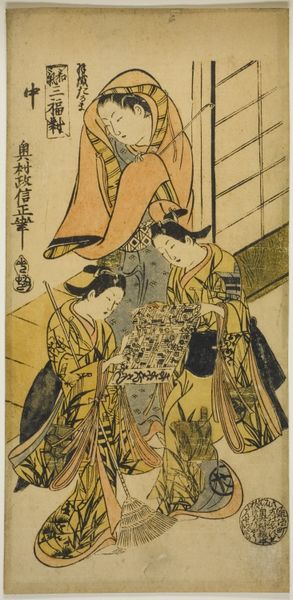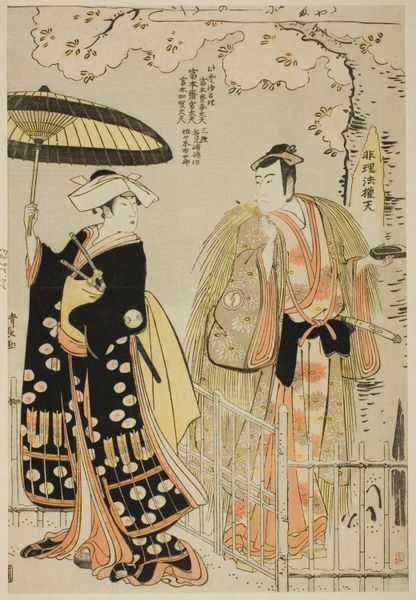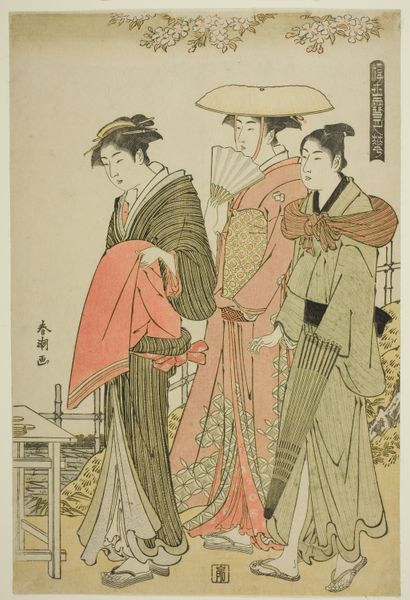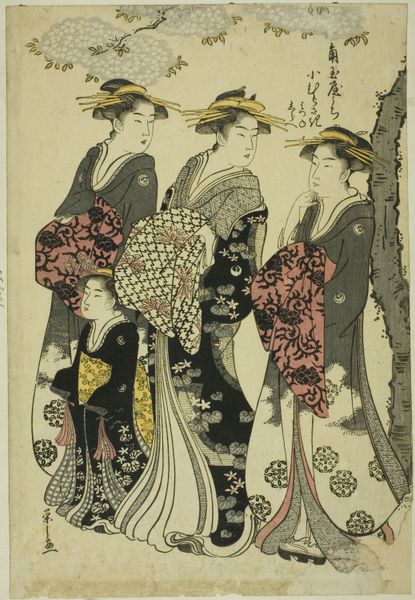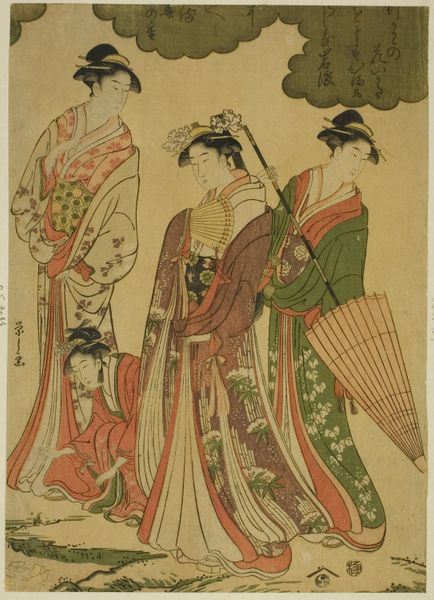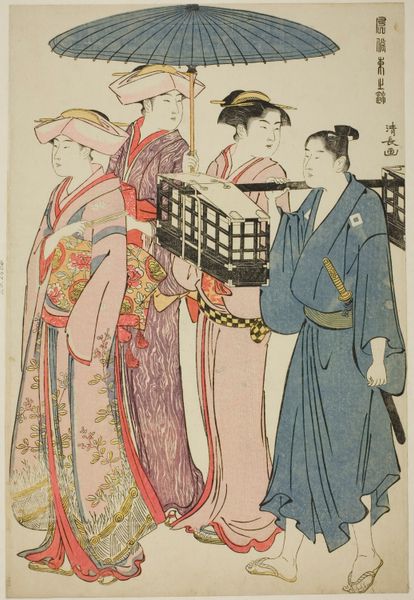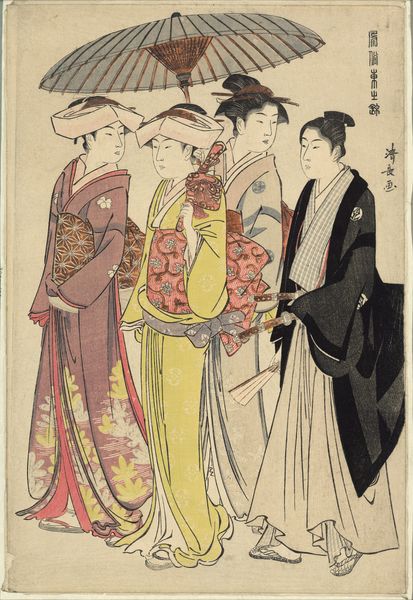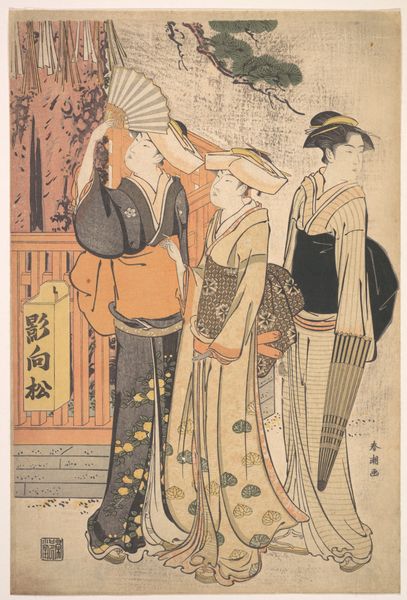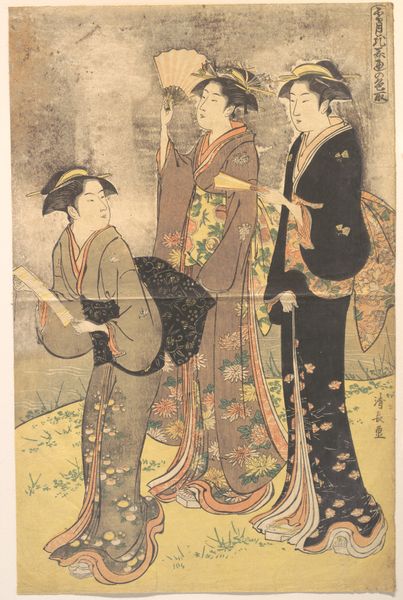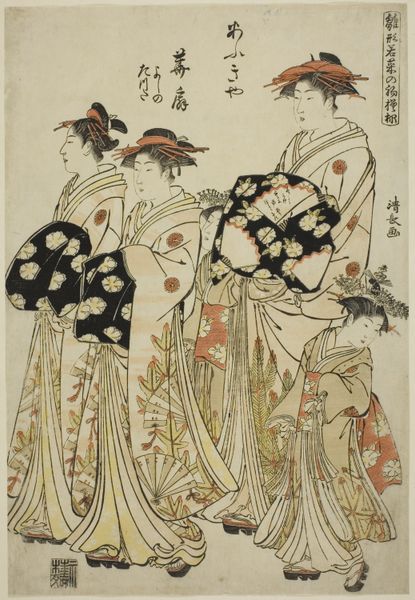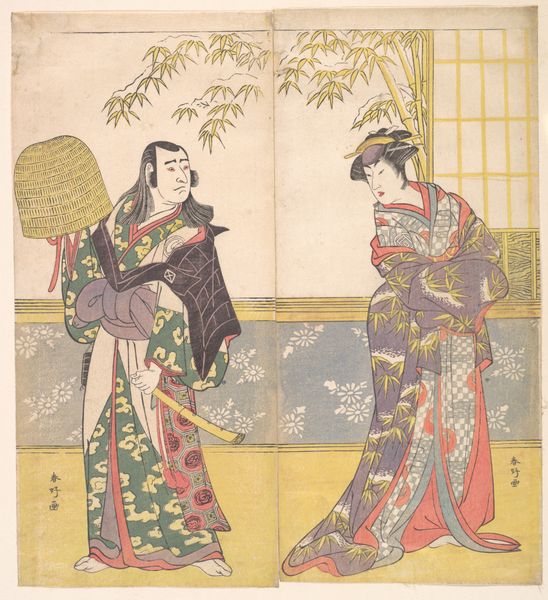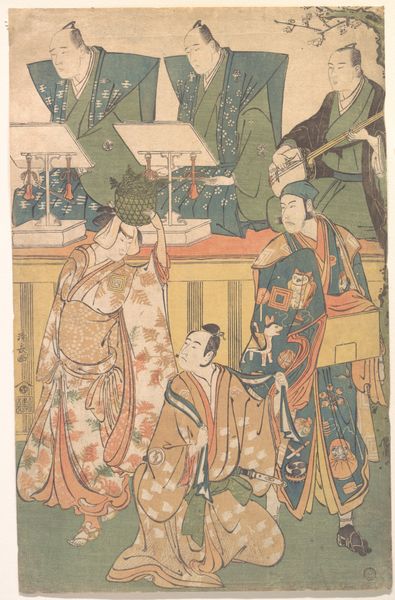
The Courtesans Nioteru, Namiji, and Omi of the Ogiya 1785
0:00
0:00
painting, print, watercolor, woodblock-print
#
portrait
#
water colours
#
ink painting
#
painting
# print
#
asian-art
#
ukiyo-e
#
japan
#
figuration
#
watercolor
#
woodblock-print
#
genre-painting
Dimensions: 39.6 × 26.5 cm
Copyright: Public Domain
Curator: This is Torii Kiyonaga’s “The Courtesans Nioteru, Namiji, and Omi of the Ogiya,” created around 1785. It’s a stunning example of ukiyo-e woodblock printing from Japan's Edo period, and we’re fortunate to have it here at The Art Institute of Chicago. Editor: It’s quite lovely! There's a gracefulness in the composition, the lines are so clean. The subdued yet elegant color palette is doing so much here. What immediately catches my eye is the interplay of the figures against the almost abstract geometrical elements, particularly the lattice structure behind them. Curator: Absolutely. What makes Kiyonaga special is his focus on the physical production. Look at the paper itself; each sheet carefully made. The distinct planes of color signify separate blocks of wood carved for each impression. The collaborative labor within workshops to design, carve, print these popular images—it reflects an extensive industry for an increasingly literate public, whose access to entertainment and portraiture transformed art itself. Editor: That interplay of textures is particularly successful here, the delicate cherry blossoms contrasting the almost matte kimonos creates a beautiful harmony. Kiyonaga also perfectly captures the figure in three dimensions on a flat surface: Note how the lines gently flow around each subject’s figure to indicate volume, their faces perfectly highlighted. Curator: Yes, and it’s fascinating to consider that these portraits helped popularize beauty ideals, and the materials used had specific associations, indicating the sitter's status and social standing. Think of the silk for the courtesans’ robes; then compare with the young assistants, or kamuro, wearing noticeably cheaper cloth. Editor: I see the emphasis of beauty through simple design principles: the use of diagonal lines from top right to bottom left drawing my eyes again to the subtle folds and shapes of the kimono. I have the same impression here with how Kiyonaga is thinking of this scene—its structure. Curator: Thinking beyond the studio to the market itself adds another element: Who consumed these prints? Why these subjects? Here, a prosperous merchant class, able to afford such objects for leisure. Their consumption impacted labor systems tied to courtesans themselves, and how gender and pleasure are displayed in these pictures. Editor: Yes, this print encapsulates so much elegance, with perfectly distributed asymmetrical objects and subjects: it's visually delightful and balanced. Curator: And examining them helps reveal not only period style, but underlying societal forces impacting what was produced and circulated, right? Editor: Indeed, there are visual and cultural details we find endlessly appealing.
Comments
No comments
Be the first to comment and join the conversation on the ultimate creative platform.
